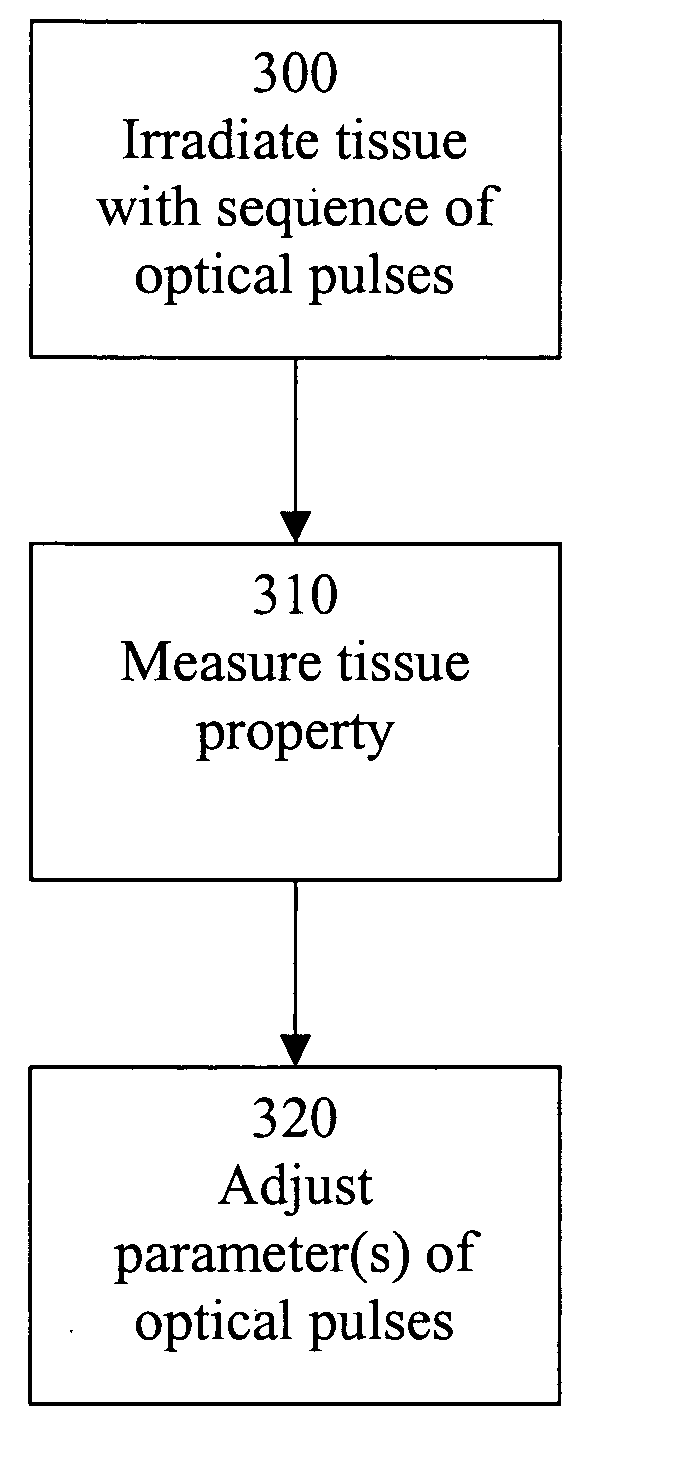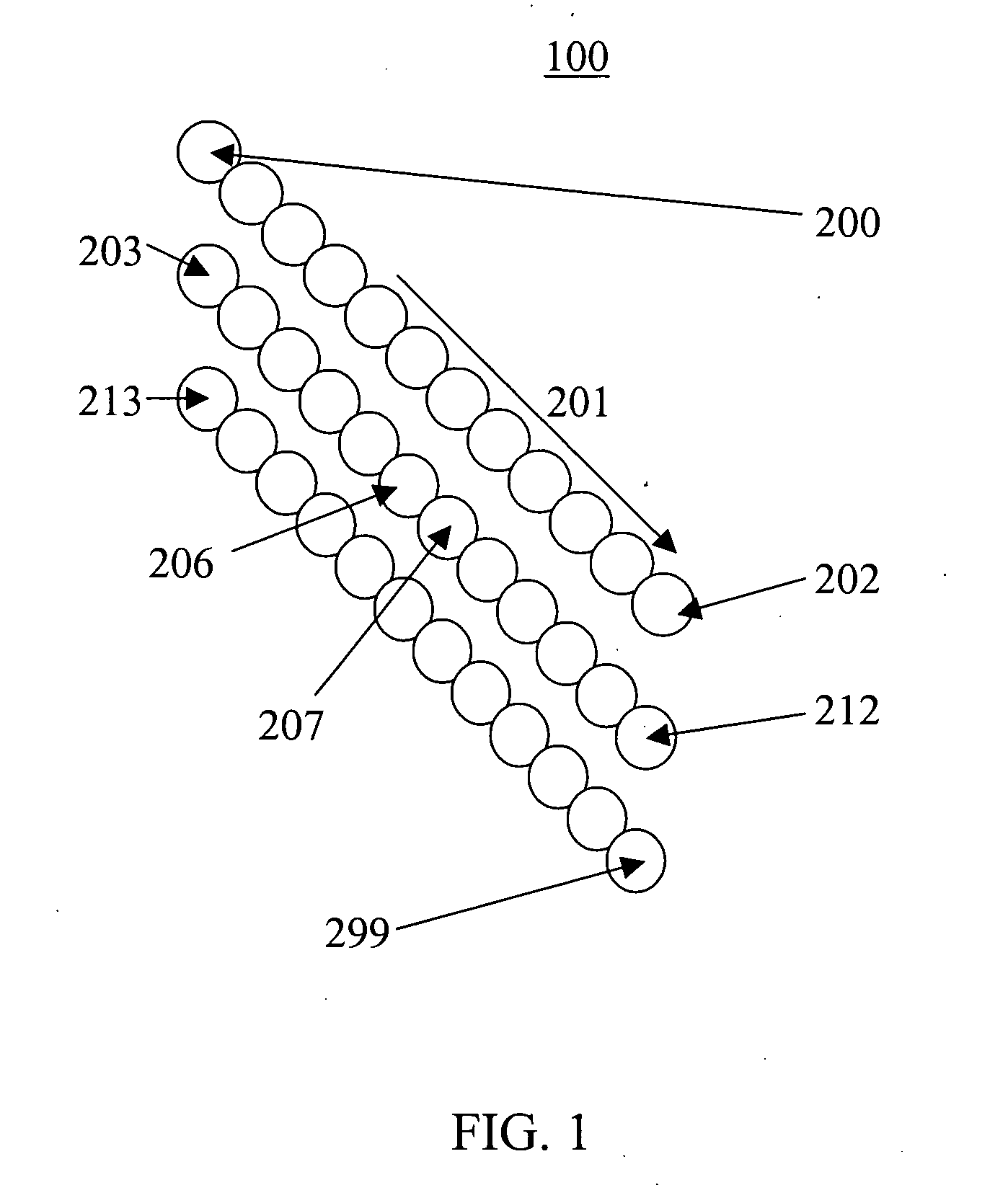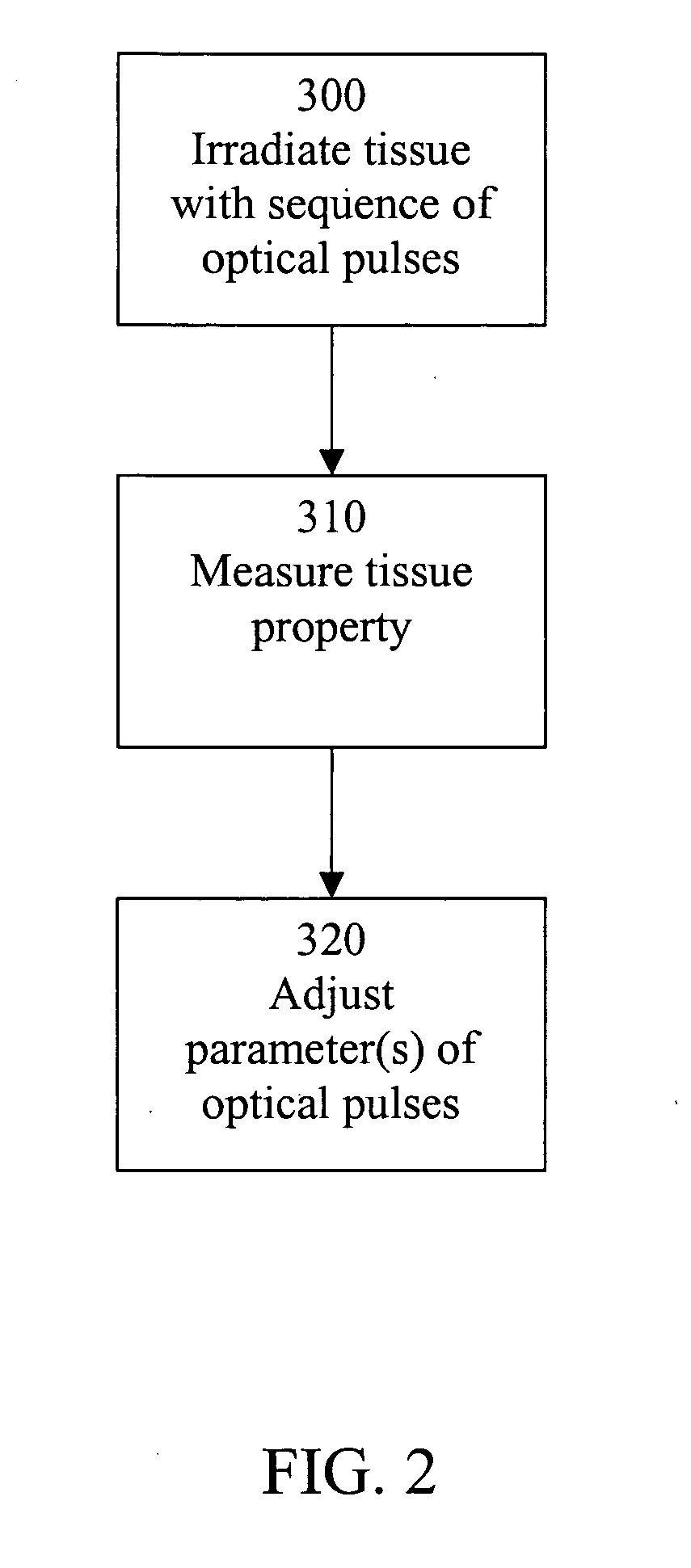Adaptive control of optical pulses for laser medicine
a technology of laser medicine and optical pulses, applied in the field of medicine, can solve the problems of affecting the penetration and heating effect of optical pulses, increasing the risk of tissue over- or under-treatment, and causing damage,
- Summary
- Abstract
- Description
- Claims
- Application Information
AI Technical Summary
Benefits of technology
Problems solved by technology
Method used
Image
Examples
Embodiment Construction
[0024]FIG. 1 is a diagram showing an irradiation pattern 100 suitable for use with the invention. The pattern includes a large number of sites, each indicated by a circle. These sites are irradiated in one treatment or scan of the tissue. A sequence of optical pulses is directed to the sites in sequence. In FIG. 1, the irradiation sequence starts from the top left with site 200 and proceeds diagonally down to the right in the direction 201 to the last site 202 in the first row. It then returns to the top left site 203 of the next row and continues down and to the right to site 212. The sequence continues until the last site 299 is irradiated.
[0025]FIG. 1 is an example. Many other patterns of sites, irradiation sequences, and sizes, shapes and locations of the sites are also suitable for use with the invention. For example, the sites may overlap, or be widely separated, or they may just touch their neighbor, as illustrated in FIG. 1. Sites may overlap at the tissue surface or not; t...
PUM
 Login to View More
Login to View More Abstract
Description
Claims
Application Information
 Login to View More
Login to View More - R&D
- Intellectual Property
- Life Sciences
- Materials
- Tech Scout
- Unparalleled Data Quality
- Higher Quality Content
- 60% Fewer Hallucinations
Browse by: Latest US Patents, China's latest patents, Technical Efficacy Thesaurus, Application Domain, Technology Topic, Popular Technical Reports.
© 2025 PatSnap. All rights reserved.Legal|Privacy policy|Modern Slavery Act Transparency Statement|Sitemap|About US| Contact US: help@patsnap.com



